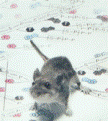Papers in the Biological Sciences

Jay F. Storz Publications
Document Type
Article
Date of this Version
2011
Abstract
Tetrapod vertebrates possess multiple alpha- and beta-like globin genes that are ontogenetically regulated, such that functionally distinct hemoglobin (Hb) isoforms are synthesized during different stages of development. The alpha- and beta-like globin genes of amphibians, birds and mammals are differentially expressed during embryonic development and postnatal life, but little is known about the developmental regulation of globin gene expression in non-avian reptiles. Here we report an investigation into the developmental regulation of Hb synthesis in the green anole lizard Anolis carolinensis. We tested two hypotheses derived from comparative genomic studies of the globin gene clusters in tetrapod vertebrates. First, we tested whether the product of the Anolis alphaD-globin gene is incorporated into embryonic Hb, thereby performing the role that would normally be performed by the embyronic alphaE-globin gene (which has been deleted from the green anole genome). Second, we tested whether two ‘lizard-specific’ -globin paralogs have independently evolved a division of labor between an early-expressed embryonic gene and a later-expressed adult gene. Results of a proteomic analysis revealed that alpha- and beta-like globin genes of the anole are differentially expressed during embryonic development. However, the same repertoire of alpha- and beta-chain Hb isoforms was expressed during all stages of development and postnatal life, and the ontogenetic shifts in isoform composition were relatively subtle. In contrast to the pattern that has been documented in other tetrapod vertebrates, it appears that the developmental regulation of Hb synthesis in the green anole lizard does not involve discrete, stage-specific switches in gene activation and gene silencing.


Comments
The Journal of Experimental Biology 214, 575-581; doi:10.1242/jeb.050443
Copyright © 2011 The Company of Biologists Ltd. Used by permission.